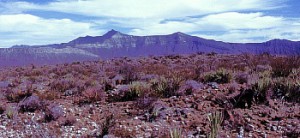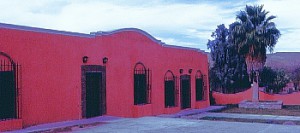Thousands of dinosaur bones have been found in northern Mexico.
Bones literally litter the ground. Here’s a femur; there’s a tibia; vertebrae, ribs, skulls…
Dozens of dinosaurs have been unearthed in a broad belt across northern Mexico, from Baja California and Sonora in the west, through Chihuahua, and Coahuila to Nuevo León and Tamaulipas in the east. Dinosaurs lived from around 230 to 65 millions years ago. Most of the dinosaurs dug up in northern states date back about 70 million years, though those found in the Huizachal canyon in Tamaulipas include the oldest known dinosaur bones in Mexico, from the Jurassic period 180 million years ago.
Earlier this year, the discovery of a new species of dinosaur, Coahuilaceratops magnacuerna, was reported from Coahuila. It is 6.7 meters long, 1.8 meters tall, and weighed 4.5 tonnes, with two 1.2-meter-long horns, longer than any other dinosaur.
There are two prime locations for dinosaurs in the state of Coahuila in northern Mexico. It is hard to imagine today, but millions of years ago the southern part of the state was a vast river delta bordering the ocean. It appears that literally hundreds of dinosaurs floundered in the mud while trying to forage for food. Conditions changed and fossilization preserved the remains of these beasts for prosperity.
Coahuila’s most famous dinosaur was discovered at Presa San Antonio, some seventy kilometers west of the state capital Saltillo. Between 1988 and 1992, excavations on ejido land, led by Dr. René Hernández of the National University (UNAM), succeeded in recovering more than 70% of the bones of a herbivorous Kritosaurus.
The world’s cheapest dinosaur
When reassembled, the creature was 7 meters (23 feet) long and stood 3.8 meters (12.5 feet) tall. It also became the cheapest dinosaur in the world. Excluding Dr. Hernandez’s salary, its excavation cost just 15,000 pesos, equivalent at the time to 5,000 dollars. Making a replica for the Institute of Geology Museum in Mexico City cost a whopping 40,000 pesos. The replica (218 bones) is named “Isauria”, apparently because one of the first high school students to view it was overheard to say that it looked just like Isaura, one of their fellow students!
The second location is even closer to Saltillo. The Rincón Colorado ejido is 43.5 kilometers west of the state capital along federal highway 40, the road to Torreón. Here, a small village, located three kilometers north of the road, boasts Mexico’s only “on-site” paleontology museum, complete with lots of dinosaur bones and imprints.
The displays in the Rincón Colorado museum reveal the wide diversity of fauna that once thrived in this area, including fish, turtles, crocodiles, sharks, bivalves, gastropods, ammonites as well as a considerable variety of flora, as shown by tell-tale signs of at least nine different kinds of fruit. Today’s vegetation is much less varied, consisting primarily of plants like agaves, prickly pear cacti, creosote bushes and acacias that can survive in the harsh semi-arid conditions.
Visitors to the museum can also obtain permission to visit the dinosaur dig, located a short distance away on arid, red-tinted, scrub-covered hillsides, one of which, formerly called Cerro de la Virgen, is now known as Cerro de los Dinosaurios. Bones litter the ground, and more than 20 dinosaurs, dating from the Late Cretaceous period, have so far been found in an area of 25 square kilometers. They include specimens of duck-billed hadrosaurs, one of which still sports its toenails, horned ceratopids (three rhinoceros-like horns on the head), carnivorous tyrannosaurids and dromaeosaurids. One triceratopid still had some skin attached to its bones, making it a very rare find. Hadrosaurs are particularly common and may have been amphibious.
See also:
- Dinosaur Bones in Mexico on MexConnect.
- Fosiles de Dinosaurios en Coahuila. Gobierno de Coahuila (SEPC) (no date)
- Hernández H., René Dinosaurios. Gobierno de Coahuila (SEPC) (no date)
One Response to “Dinosaurs in Mexico”
Sorry, the comment form is closed at this time.


Hello! Just want to say thank you for this interesting article! =) Peace, Joy.